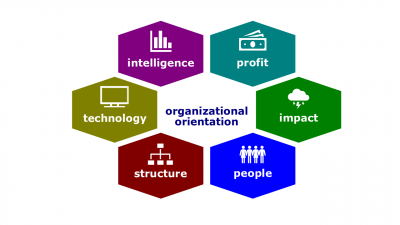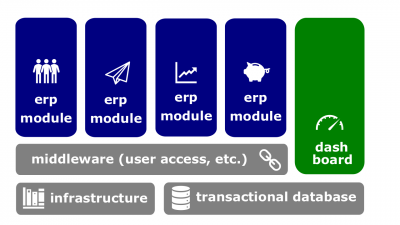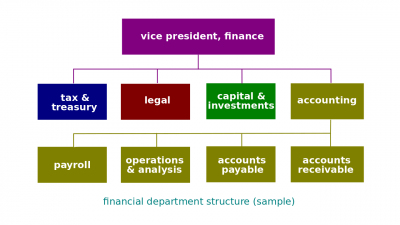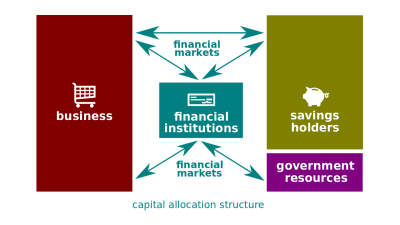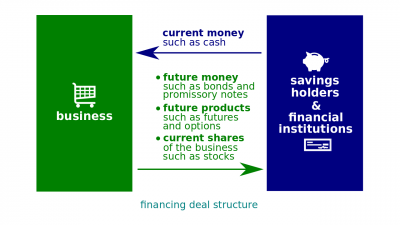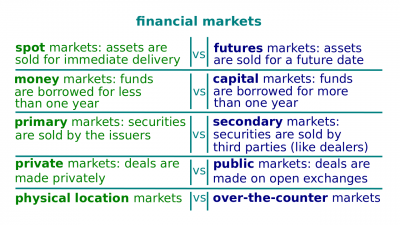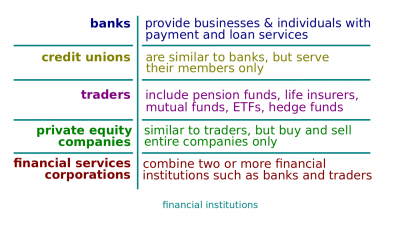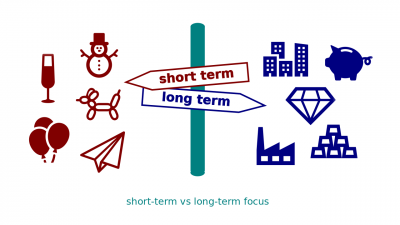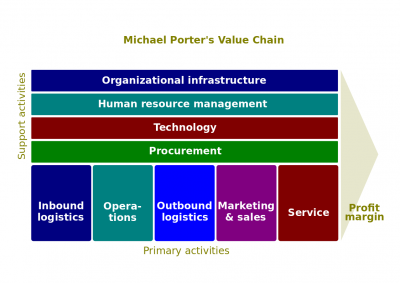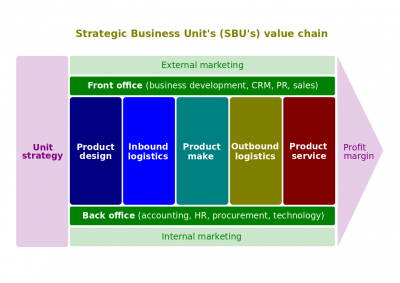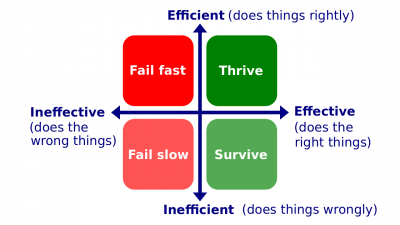Difference between revisions of "Resource Planning Quarter"
| (36 intermediate revisions by the same user not shown) | |||
| Line 1: | Line 1: | ||
| − | [[Resource Planning Quarter]] (hereinafter, the ''Quarter'') is a lecture introducing the learners to [[organizational | + | [[Resource Planning Quarter]] (hereinafter, the ''Quarter'') is a lecture introducing the learners to [[organizational management]] primarily through key topics related to [[enterprise resource planning]]. The ''Quarter'' is the last of four lectures of [[Organizational Quadrivium]], which is the last of seven modules of '''[[Septem Artes Administrativi]]''' (hereinafter, the ''Course''). The ''Course'' is designed to introduce the learners to general concepts in [[business administration]], [[management]], and [[organizational behavior]]. |
==Outline== | ==Outline== | ||
| − | ''[[Organizational Culture Quarter]] is the predecessor lecture. In the [[enterprise | + | ''[[Organizational Culture Quarter]] is the predecessor lecture. In the [[enterprise planning]] series, the previous lecture is [[Leadership Quarter]].'' |
===Concepts=== | ===Concepts=== | ||
#'''[[Enterprise resource planning]]''' ([[Enterprise resource planning|ERP]]). The integrated management of core business processes, often in real-time and mediated by [[ERP software]] and other technology connected to [[ERP software]]. | #'''[[Enterprise resource planning]]''' ([[Enterprise resource planning|ERP]]). The integrated management of core business processes, often in real-time and mediated by [[ERP software]] and other technology connected to [[ERP software]]. | ||
| − | #*[[Key performance indicator]] (KPI). (1) A metric that an [[enterprise]] uses to measure its progress against to determine whether this ''enterprise'' is meeting its goals. The results are reported in the form of a dashboard or a scorecard report that enables executives, managers, and employees to assess performance, and whether a given goal (or metric) is being met, exceeded, or missed; (2) An approach to helping a business achieve its goals through the development of agreed upon critical performance targets and the measurement of progress towards those targets. [[Key performance indicator]]s can be, and often are, applied at every level of the [[enterprise]]. | + | #*[[Key performance indicator]] ([[Key performance indicator|KPI]]). (1) A metric that an [[enterprise]] uses to measure its progress against to determine whether this ''enterprise'' is meeting its goals. The results are reported in the form of a dashboard or a scorecard report that enables executives, managers, and employees to assess performance, and whether a given goal (or metric) is being met, exceeded, or missed; (2) An approach to helping a business achieve its goals through the development of agreed upon critical performance targets and the measurement of progress towards those targets. [[Key performance indicator]]s can be, and often are, applied at every level of the [[enterprise]]. |
| − | #*[[Organizational development]]. A collection of [[planned change]] interventions, built on humanistic-democratic values, that seeks to improve [[enterprise productivity]] and employee well-being. [[Organizational development]] can also be defined as change plans that focus on (1) people, (2) [[enterprise]], and (3) the nature and quality of work relationships. | + | #*[[File:Organizational-orientation.png|400px|thumb|right|[[Organizational orientation]]]][[Organizational development]]. A collection of [[planned change]] interventions, built on humanistic-democratic values, that seeks to improve [[enterprise productivity]] and employee well-being. [[Organizational development]] can also be defined as change plans that focus on (1) people, (2) [[enterprise]], and (3) the nature and quality of work relationships. |
| − | #[[File:Erp-software.png|400px|thumb|right| | + | #[[File:Erp-software.png|400px|thumb|right|[[Enterprise resource planning ecosystem]]]]'''[[Enterprise resource planning ecosystem]]''' ([[Enterprise resource planning ecosystem|ERP suite]]). A [[business process]] management software that allows an [[enterprise]] to use a system of integrated applications to manage the business and automate many back office functions related to technology, services and [[human resource]]s. |
#*[[Transactional database]]. Any [[database]] that is able to accommodate transactions related to the conducting of business, especially buying or selling. | #*[[Transactional database]]. Any [[database]] that is able to accommodate transactions related to the conducting of business, especially buying or selling. | ||
| − | #*[[Management dashboard]]. The panel containing instruments and controls that a software user is able to utilize. | + | #*[[Management dashboard]]. The panel containing instruments and controls that a software [[end-user]] is able to utilize. |
| − | #*[[ERP module]]. A module of [[ | + | #*[[ERP module]]. A module of an [[enterprise resource planning ecosystem]]. |
#*[[Enterprise middleware]]. [[Middleware]] that provides all software applications with data and/or services. | #*[[Enterprise middleware]]. [[Middleware]] that provides all software applications with data and/or services. | ||
#'''[[ERP implementation]]'''. The process of installing and configuring [[ERP software]]. This process involves installing, configuring, testing, training and preparing an organization for the change. | #'''[[ERP implementation]]'''. The process of installing and configuring [[ERP software]]. This process involves installing, configuring, testing, training and preparing an organization for the change. | ||
| − | #*[[Integrated software]]. Two or more software functions within the overall | + | #*[[Integrated software]]. Two or more software functions within the overall [[enterprise resource planning ecosystem]] that share data and combine functions, such as order processing and inventory control, or invoicing and accounts receivable. |
#*[[3rd party application]]. Software that has been developed by an outside company and is sold through a vendor. | #*[[3rd party application]]. Software that has been developed by an outside company and is sold through a vendor. | ||
| − | #'''[[Enterprise accounting management]]'''. The [[ERP module]] that supports management of accounting such as [[general ledger]], [[account payable]]s including vouchering, matching, and payment, [[account receivable]]s, cash management, collections, financial consolidation, etc. | + | #[[File:Fin-struct.png|400px|thumb|right|[[Financial management]]]]'''[[Enterprise accounting management]]'''. The [[ERP module]] that supports management of accounting such as [[general ledger]], [[account payable]]s including vouchering, matching, and payment, [[account receivable]]s, cash management, collections, financial consolidation, etc. |
#*[[Fixed asset]]. Assets that are necessary for production, but that are not going to generate cash within a year. These include assets such as equipment, vehicles, buildings, and more. | #*[[Fixed asset]]. Assets that are necessary for production, but that are not going to generate cash within a year. These include assets such as equipment, vehicles, buildings, and more. | ||
#*[[Aging]]. Assets' organizing and sorting according to how long they have existed. | #*[[Aging]]. Assets' organizing and sorting according to how long they have existed. | ||
| − | #*[[Liquidity]]. The degree to which [[ | + | #*[[Liquidity]]. The degree to which [[Owner's Capital]] can be turned into cash quickly. |
| − | #*[[Part number]]. Unique identifiers that identify every SKU. | + | #*[[Part number]]. Unique identifiers that identify every [[Stock keeping unit|SKU]]. |
| − | #*[[Stock keeping unit]] (SKU). A unique identifier for each distinct product and service that can be purchased in business. | + | #*[[Stock keeping unit]] ([[Stock keeping unit|SKU]]). A unique identifier for each distinct product and service that can be purchased in business. |
| − | #'''[[Enterprise budget management]]'''. The [[ERP module]] that supports management of [[budget]] such as costing, cost management, activity based costing, etc. | + | #[[File:Capital-market.png|400px|thumb|right|[[Capital allocation]]]][[File:Financing-deal.png|400px|thumb|right|[[Financing]]]][[File:Fin-markets.png|400px|thumb|right|[[Financial market]]]][[File:Fin-inst.png|400px|thumb|right|[[Financial institution]]]]'''[[Enterprise budget management]]'''. The [[ERP module]] that supports management of [[budget]] such as costing, cost management, activity based costing, etc. |
| − | #*[[Budgeting]]. The process of allocating resources to pay for designated future costs. | + | #*[[File:Long-vs-short.png|400px|thumb|right|[[Corporate governance]]]][[Budgeting]]. The process of allocating resources to pay for designated future costs. |
#*[[Zero-balance budgeting]]. Process starting with an established point of zero rather than using the current budget as the basis for adding, modifying, or subtracting resources. | #*[[Zero-balance budgeting]]. Process starting with an established point of zero rather than using the current budget as the basis for adding, modifying, or subtracting resources. | ||
#*[[Incremental budgeting]]. Process starting with the current budget from which managers decide whether they need additional resources and the justification for requesting it. | #*[[Incremental budgeting]]. Process starting with the current budget from which managers decide whether they need additional resources and the justification for requesting it. | ||
#'''[[Enterprise people management]]'''. The [[ERP module]] that supports management of [[human resource]]s such as [[recruiting]], [[training]], [[rostering]], [[payroll]], [[benefits]], [[retirement]], pension plans, diversity management, separation, etc. | #'''[[Enterprise people management]]'''. The [[ERP module]] that supports management of [[human resource]]s such as [[recruiting]], [[training]], [[rostering]], [[payroll]], [[benefits]], [[retirement]], pension plans, diversity management, separation, etc. | ||
| − | #'''[[Enterprise production management]]'''. The [[ERP module]] that supports management of production such as engineering, capacity, workflow management, quality control, manufacturing process, manufacturing projects, manufacturing flow, product life cycle management, etc. | + | #'''[[Enterprise production management]]'''. The [[ERP module]] that supports management of production such as engineering, [[capacity]], workflow management, quality control, manufacturing process, manufacturing projects, manufacturing flow, product life cycle management, etc. |
#*[[Work order]]. A request that specifies the quantity and type of a material to be manufactured, as well as the date that it needs to be manufactured by. A Work Order also defines all component material and labor operations required to complete production of the manufactured item. | #*[[Work order]]. A request that specifies the quantity and type of a material to be manufactured, as well as the date that it needs to be manufactured by. A Work Order also defines all component material and labor operations required to complete production of the manufactured item. | ||
#*[[Bill of material]]. A list of the type and quantity of components needed to build a part. | #*[[Bill of material]]. A list of the type and quantity of components needed to build a part. | ||
| − | #*[[Mixed mode manufacturer]]. In discrete manufacturing, the requirement to produce [[make to stock]], [[make to order]], [[configure to order]], and [[engine to order]] products. In order to accomplish this an | + | #*[[Mixed mode manufacturer]]. In discrete manufacturing, the requirement to produce [[make to stock]], [[make to order]], [[configure to order]], and [[engine to order]] products. In order to accomplish this an [[enterprise resource planning ecosystem]] must provide robust functionality for all modes simultaneously which can prove to be extremely challenging, and often requires creativity in configuration as well as flexibility on the business processes. |
#*[[Lean manufacturing]]. A manufacturing method that focuses on the elimination of waste within a manufacturing system. This approach helps determine the right combination of value for the customer needs, and producing that value in the most efficient and effective manner possible. | #*[[Lean manufacturing]]. A manufacturing method that focuses on the elimination of waste within a manufacturing system. This approach helps determine the right combination of value for the customer needs, and producing that value in the most efficient and effective manner possible. | ||
#*[[Allocation]]. Distribution of cost in a manufacturing process. | #*[[Allocation]]. Distribution of cost in a manufacturing process. | ||
#*[[Master production schedule]]. The schedule that a company uses to plan how many items need to be produced within a given timeframe. This time-phased production plan is comprised of forecasts, actual demand and supply and attempts to balance these components taking into account all resources. | #*[[Master production schedule]]. The schedule that a company uses to plan how many items need to be produced within a given timeframe. This time-phased production plan is comprised of forecasts, actual demand and supply and attempts to balance these components taking into account all resources. | ||
| − | #*[[Assemble to order]] (ATO). A manufacturing strategy that allows | + | #*[[Assemble to order]] ([[Assemble to order|ATO]]). A manufacturing strategy that allows [[user]]s to combine a limited number of sub-assemblies into a large number of possible finished items. This strategy is designed to allow a wide variety of customization options, shorter lead times, and low inventory risk. |
#*[[Engineer to order]]. A production approach where components are designed, engineered and built to specifications after the order has already been received. | #*[[Engineer to order]]. A production approach where components are designed, engineered and built to specifications after the order has already been received. | ||
#*[[Make-to-order]]. A manufacturing process where manufacturing starts after receiving a customer's order. | #*[[Make-to-order]]. A manufacturing process where manufacturing starts after receiving a customer's order. | ||
| − | #*[[Capacity requirements planning]] (CRP). The process of calculating the production capacity that a business requires to meet planned and actual demand. | + | #*[[Capacity requirements planning]] ([[Capacity requirements planning|CRP]]). The process of calculating the production [[capacity]] that a business requires to meet planned and actual demand. |
#*[[Job shop]]. A manufacturing facility that produces discrete, specialized, and fairly small manufacturing runs of products that are usually not repeated. | #*[[Job shop]]. A manufacturing facility that produces discrete, specialized, and fairly small manufacturing runs of products that are usually not repeated. | ||
#'''[[Enterprise order processing]]'''. The [[ERP module]] that supports management of orders such as order to cash, order entry, credit checking, pricing, available to promise, inventory, shipping, sales analysis and reporting, sales commissioning, etc. | #'''[[Enterprise order processing]]'''. The [[ERP module]] that supports management of orders such as order to cash, order entry, credit checking, pricing, available to promise, inventory, shipping, sales analysis and reporting, sales commissioning, etc. | ||
#*[[Order management]]. The process of fulfilling and tracking customer orders. | #*[[Order management]]. The process of fulfilling and tracking customer orders. | ||
#*[[Build to stock]]. A build-ahead approach to production, where items are built ahead of time according to sales forecasts or historical demand. | #*[[Build to stock]]. A build-ahead approach to production, where items are built ahead of time according to sales forecasts or historical demand. | ||
| − | #*[[Return merchandise authorization]] (RMA). A unique document with an identifying number that grants a customer permission to return goods to a manufacturer. | + | #*[[Return merchandise authorization]] ([[Return merchandise authorization|RMA]]). A unique document with an identifying number that grants a customer permission to return goods to a manufacturer. |
#'''[[Supply chain management]]'''. The [[ERP module]] that supports management of supply chain such as supply chain planning, supplier scheduling, product configurator, purchasing, inventory, claim processing, warehousing including receiving, putaway, picking, and packing. | #'''[[Supply chain management]]'''. The [[ERP module]] that supports management of supply chain such as supply chain planning, supplier scheduling, product configurator, purchasing, inventory, claim processing, warehousing including receiving, putaway, picking, and packing. | ||
#*[[Routing]]. A description of the sequence of steps that materials need to go through in order to produce a fabricated part, sub-assembly, or finished product. | #*[[Routing]]. A description of the sequence of steps that materials need to go through in order to produce a fabricated part, sub-assembly, or finished product. | ||
#*[[Lot number]]. A number that is used to identify a specific quantity or lot of material from a manufacturer. | #*[[Lot number]]. A number that is used to identify a specific quantity or lot of material from a manufacturer. | ||
#*[[Material control management]]. Associated primarily with moving, storing, and assessing materials used or consumed in manufacturing. Inventory management, quality assurance, production reporting, and cycle counting. Most material master data and inventory movements all fall within the scope of materials management. | #*[[Material control management]]. Associated primarily with moving, storing, and assessing materials used or consumed in manufacturing. Inventory management, quality assurance, production reporting, and cycle counting. Most material master data and inventory movements all fall within the scope of materials management. | ||
| − | #*[[Material requirements planning]] (MRP). A system used to plan production, scheduling and inventory. An MRP system ensures that enough materials are available for production, enough finished products are available to deliver to customers, and that the lowest amount of materials and products needed are on hand. MRP also plans manufacturing activities, delivery schedules and purchasing activities. | + | #*[[Material requirements planning]] ([[Material requirements planning|MRP]]). A system used to plan production, scheduling and inventory. An [[Material requirements planning|MRP]] system ensures that enough materials are available for production, enough finished products are available to deliver to customers, and that the lowest amount of materials and products needed are on hand. MRP also plans manufacturing activities, delivery schedules and purchasing activities. |
#*[[Materials management]]. Activities involved with transporting, storing, and evaluating materials used during the manufacturing process. | #*[[Materials management]]. Activities involved with transporting, storing, and evaluating materials used during the manufacturing process. | ||
#*[[Purchase requisition]]. A request for approval to purchase a material or service. | #*[[Purchase requisition]]. A request for approval to purchase a material or service. | ||
#'''[[Enterprise project management]]'''. The [[ERP module]] that supports management of projects such as project planning, resource planning, project costing, [[work breakdown structure]], billing, time and expense, performance units, activity management, etc. | #'''[[Enterprise project management]]'''. The [[ERP module]] that supports management of projects such as project planning, resource planning, project costing, [[work breakdown structure]], billing, time and expense, performance units, activity management, etc. | ||
#*[[Job cost]]. A method in which all costs associated with a project are recorded over time, totaled at the end, and where the actual and planned costs are compared to generate variances that can be fed to accounting systems. | #*[[Job cost]]. A method in which all costs associated with a project are recorded over time, totaled at the end, and where the actual and planned costs are compared to generate variances that can be fed to accounting systems. | ||
| − | #'''[[ | + | #'''[[Enterprise customer relationship management]]'''. The [[ERP module]] that supports management of customer relationships such as sales and marketing, commissions, service, customer contact, call center support, etc. [[CRM system]] is not always considered part of [[enterprise resource planning ecosystem]], but always a part of [[business support system]]s ([[business support system|BSS]]). |
#'''[[Data service management]]'''. Various "self–service" interfaces for customers, suppliers and/or employees | #'''[[Data service management]]'''. Various "self–service" interfaces for customers, suppliers and/or employees | ||
#'''[[Cost of quality]]'''. The costs incurred to ensure quality. The cost of quality includes quality planning, [[quality control]], [[quality assurance]], and [[rework]]. | #'''[[Cost of quality]]'''. The costs incurred to ensure quality. The cost of quality includes quality planning, [[quality control]], [[quality assurance]], and [[rework]]. | ||
#*[[Rework]]. Action taken to bring a defective or nonconforming item into compliance with requirements or specifications. | #*[[Rework]]. Action taken to bring a defective or nonconforming item into compliance with requirements or specifications. | ||
#*[[Total quality management]] (TQM). A philosophy of management that is driven by continuous improvement and responsiveness to customer needs and expectations. | #*[[Total quality management]] (TQM). A philosophy of management that is driven by continuous improvement and responsiveness to customer needs and expectations. | ||
| − | #'''[[Value chain]]'''. The entire series of organizational work activities that add value to each step from raw materials to finished product. | + | #[[File:Value-chain.png|400px|thumb|right|[[Value chain]]]][[File:Value-chain-redefined.png|400px|thumb|right|[[Strategic business unit]] ([[Strategic business unit|SBU]])]]'''[[Value chain]]'''. The entire series of organizational work activities that add value to each step from raw materials to finished product. |
#*[[Service profit chain]]. The service sequence from employees to customers to profit. | #*[[Service profit chain]]. The service sequence from employees to customers to profit. | ||
#*[[Technology]]. The way in which an [[organization]] transfers its [[input]]s into [[output]]s. | #*[[Technology]]. The way in which an [[organization]] transfers its [[input]]s into [[output]]s. | ||
| − | #*[[Cloud computing]]. A process whereby | + | #*[[Cloud computing]]. A process whereby [[user]]s are connected to their [[enterprise software]] via the internet rather than to computer equipment at their location thus eliminating the cost and need to have the hardware infrastructure located and maintained at their site. In other words, [[cloud computing]] refers to storing and accessing data on the Internet rather than a computer's hard drive or a company's network. |
#*[[Internet of things]]. Allows everyday "things" to generate and store and share data across the Internet. | #*[[Internet of things]]. Allows everyday "things" to generate and store and share data across the Internet. | ||
#*[[Sharing economy]]. Business arrangements that are based on people sharing something they own or providing a service for a fee. | #*[[Sharing economy]]. Business arrangements that are based on people sharing something they own or providing a service for a fee. | ||
#'''[[Value engineering]]''' (VE). A creative approach used to optimize life-cycle costs, save time, increase profits, improve quality, expand market share, solve problems, and/or use resources more effectively. [[Value engineering]] can be divided into [[portfolio engineering]], [[product engineering]], [[market engineering]], and [[effort engineering]]. | #'''[[Value engineering]]''' (VE). A creative approach used to optimize life-cycle costs, save time, increase profits, improve quality, expand market share, solve problems, and/or use resources more effectively. [[Value engineering]] can be divided into [[portfolio engineering]], [[product engineering]], [[market engineering]], and [[effort engineering]]. | ||
| − | #*[[Value]]. The performance characteristics, features, and attributes, and any other aspects of [[ | + | #*[[Value]]. The performance characteristics, features, and attributes, and any other aspects of [[market exchangeable]]s for which [[customer]]s are willing to give up resources. In other words, a [[value]] is the benefit enjoyed by the [[stakeholder]]s of the [[market exchangeable]] when the [[market exchangeable]] is in operation. |
#*[[Value stream mapping]] (VSM). A tool that helps businesses understand how their flows currently operate and helps them figure out ways to improve them in the future. This is achieved by creating a process map that is used to streamline processes across the entire supply chain. A Value Stream Map (VSM) is a process map that identifies all the steps and data streams required to produce a particular product or service while adding value to each step that results in improved customer satisfaction. | #*[[Value stream mapping]] (VSM). A tool that helps businesses understand how their flows currently operate and helps them figure out ways to improve them in the future. This is achieved by creating a process map that is used to streamline processes across the entire supply chain. A Value Stream Map (VSM) is a process map that identifies all the steps and data streams required to produce a particular product or service while adding value to each step that results in improved customer satisfaction. | ||
===Roles=== | ===Roles=== | ||
| − | |||
| − | |||
| − | |||
#'''[[Network administrator]]'''. The person who is responsible for managing the computer network of a business, including its security and performance. | #'''[[Network administrator]]'''. The person who is responsible for managing the computer network of a business, including its security and performance. | ||
#'''[[Systems integrator]]'''. An [[ERP software]] specialist who brings unique knowledge on process, equipment, and vendor market needed to discover problems, analyze needs, design solutions, and implement those. | #'''[[Systems integrator]]'''. An [[ERP software]] specialist who brings unique knowledge on process, equipment, and vendor market needed to discover problems, analyze needs, design solutions, and implement those. | ||
| Line 77: | Line 74: | ||
===Methods=== | ===Methods=== | ||
| − | #'''[[ERP integration method]]'''. A method used to integrate various [[data source]]s including connectivity to plant floor [[data]] into [[ | + | #'''[[ERP integration method]]'''. A method used to integrate various [[data source]]s including connectivity to plant floor [[data]] into [[enterprise resource planning ecosystem]]. |
#*[[Direct integration]]. Integration of [[datapoint device]]s directly into a [[system]]. | #*[[Direct integration]]. Integration of [[datapoint device]]s directly into a [[system]]. | ||
#*[[Database integration]]. Integration of various databases. | #*[[Database integration]]. Integration of various databases. | ||
| − | #*[[Enterprise appliance transaction module]] (EATM). A device, typically used in the manufacturing automation marketplace, to transfer plant floor equipment and product status to [[ | + | #*[[Enterprise appliance transaction module]] (EATM). A device, typically used in the manufacturing automation marketplace, to transfer plant floor equipment and product status to [[enterprise resource planning ecosystem]] or similar software systems. |
===Instruments=== | ===Instruments=== | ||
#'''[[ERP software]]'''. An [[integrated software]] system that integrates all [[software application]]s related to [[business process]]es such as [[customer relationship management]], [[order processing]], [[supply chain management]], [[manufacturing]], [[human resource management]], [[project management]], and [[accounting]]. [[ERP software]] operates in or near real time; its common or interrelated database supports all the applications. [[ERP software]] usually provides a consistent [[look and feel]] across various applications. | #'''[[ERP software]]'''. An [[integrated software]] system that integrates all [[software application]]s related to [[business process]]es such as [[customer relationship management]], [[order processing]], [[supply chain management]], [[manufacturing]], [[human resource management]], [[project management]], and [[accounting]]. [[ERP software]] operates in or near real time; its common or interrelated database supports all the applications. [[ERP software]] usually provides a consistent [[look and feel]] across various applications. | ||
#*[[Odoo]]. A suite of business applications including [[CRM]], [[website]] and [[e-commerce]], billing, accounting, manufacturing, warehouse, [[project management]], and inventory. The Community version is [[open-source]] while the Enterprise version supplements the Community edition with commercial features and services. | #*[[Odoo]]. A suite of business applications including [[CRM]], [[website]] and [[e-commerce]], billing, accounting, manufacturing, warehouse, [[project management]], and inventory. The Community version is [[open-source]] while the Enterprise version supplements the Community edition with commercial features and services. | ||
| + | #'''[[Cloud]]'''. | ||
| + | #*[[SaaS]]. Software as a service. A software product that is hosted remotely, usually over the internet (a.k.a. "in the cloud"). | ||
===Results=== | ===Results=== | ||
| − | #'''[[Budget]]'''. The financial plan for allocating resources to specific activities. An [[enterprise]] uses its [[budget]] to establish its estimates for earnings ahead and its decisions on what those estimated earnings will be spent. A [[budget]] is used to control the actual financial data against this plan. | + | #'''[[Budget]]'''. The financial plan for allocating resources to specific activities. An [[enterprise]] uses its [[budget]] to establish its estimates for [[earnings]] ahead and its decisions on what those estimated [[earnings]] will be spent. A [[budget]] is used to control the actual financial data against this plan. |
#'''[[Enterprise performance]]'''. The accumulated results of all the enterprise's work activities.<blockquote><table class="wikitable" width=100% style="text-align:center;"><tr><td>[[Enterprise performance]]</td><th>Definition</th><th>Area</th><th>Purpose</th></tr><tr><th>[[Effectiveness]]</th><td>Doing the right things</td><td>Goal attainment</td><td>The ends</td></tr><tr><th>[[Efficiency]]</th><td>Doing things right</td><td>Resource usage</td><td>The means</td></tr></table></blockquote> | #'''[[Enterprise performance]]'''. The accumulated results of all the enterprise's work activities.<blockquote><table class="wikitable" width=100% style="text-align:center;"><tr><td>[[Enterprise performance]]</td><th>Definition</th><th>Area</th><th>Purpose</th></tr><tr><th>[[Effectiveness]]</th><td>Doing the right things</td><td>Goal attainment</td><td>The ends</td></tr><tr><th>[[Efficiency]]</th><td>Doing things right</td><td>Resource usage</td><td>The means</td></tr></table></blockquote> | ||
#*[[Capability]]. An organization's skill and ability in doing the work activities needed in its business. | #*[[Capability]]. An organization's skill and ability in doing the work activities needed in its business. | ||
| − | #*[[File:Efficiency-effectiveness.png|400px|thumb|right|Efficiency vs effectiveness]][[Performance]]. The end result of an activity. | + | #*[[File:Efficiency-effectiveness.png|400px|thumb|right|[[Efficiency]] vs [[effectiveness]]]][[Performance]]. The end result of an activity. |
#*[[Efficiency]]. The degree to which an [[enterprise]] gets the most [[output]]s from the least amount of [[input]]s. | #*[[Efficiency]]. The degree to which an [[enterprise]] gets the most [[output]]s from the least amount of [[input]]s. | ||
#*[[Effectiveness]]. The degree to which an [[enterprise]] does those [[activity|activiti]]es that result in achieving its [[goal]]s. In other words, [[effectiveness]] is the measure of how an [[enterprise]] meets the needs of its clientele or customers.<blockquote>[[Efficiency]] is doing things right; [[effectiveness]] is doing the right things. -- ''Peter Drucker, management consultant''</blockquote> | #*[[Effectiveness]]. The degree to which an [[enterprise]] does those [[activity|activiti]]es that result in achieving its [[goal]]s. In other words, [[effectiveness]] is the measure of how an [[enterprise]] meets the needs of its clientele or customers.<blockquote>[[Efficiency]] is doing things right; [[effectiveness]] is doing the right things. -- ''Peter Drucker, management consultant''</blockquote> | ||
| Line 96: | Line 95: | ||
===Practices=== | ===Practices=== | ||
| − | ''No successor lecture exists in the Course. Happy [[ | + | ''No successor lecture exists in the Course. Happy [[DREPD]]s -- [[enterprise discovery|discoveri]]es, [[enterprise research|research]], [[enterprise envisioning|envisioning]]s, and [[enterprise planning|planning]]s of the learned concepts, methods, instruments, and practices on the fields!'' |
==Materials== | ==Materials== | ||
| Line 106: | Line 105: | ||
==See also== | ==See also== | ||
| + | |||
| + | [[Category:Septem Artes Administrativi]][[Category:Lecture notes]] | ||
Latest revision as of 12:51, 6 May 2023
Resource Planning Quarter (hereinafter, the Quarter) is a lecture introducing the learners to organizational management primarily through key topics related to enterprise resource planning. The Quarter is the last of four lectures of Organizational Quadrivium, which is the last of seven modules of Septem Artes Administrativi (hereinafter, the Course). The Course is designed to introduce the learners to general concepts in business administration, management, and organizational behavior.
Contents
Outline
Organizational Culture Quarter is the predecessor lecture. In the enterprise planning series, the previous lecture is Leadership Quarter.
Concepts
- Enterprise resource planning (ERP). The integrated management of core business processes, often in real-time and mediated by ERP software and other technology connected to ERP software.
- Key performance indicator (KPI). (1) A metric that an enterprise uses to measure its progress against to determine whether this enterprise is meeting its goals. The results are reported in the form of a dashboard or a scorecard report that enables executives, managers, and employees to assess performance, and whether a given goal (or metric) is being met, exceeded, or missed; (2) An approach to helping a business achieve its goals through the development of agreed upon critical performance targets and the measurement of progress towards those targets. Key performance indicators can be, and often are, applied at every level of the enterprise.
- Organizational development. A collection of planned change interventions, built on humanistic-democratic values, that seeks to improve enterprise productivity and employee well-being. Organizational development can also be defined as change plans that focus on (1) people, (2) enterprise, and (3) the nature and quality of work relationships.
- Enterprise resource planning ecosystem (ERP suite). A business process management software that allows an enterprise to use a system of integrated applications to manage the business and automate many back office functions related to technology, services and human resources.
- Transactional database. Any database that is able to accommodate transactions related to the conducting of business, especially buying or selling.
- Management dashboard. The panel containing instruments and controls that a software end-user is able to utilize.
- ERP module. A module of an enterprise resource planning ecosystem.
- Enterprise middleware. Middleware that provides all software applications with data and/or services.
- ERP implementation. The process of installing and configuring ERP software. This process involves installing, configuring, testing, training and preparing an organization for the change.
- Integrated software. Two or more software functions within the overall enterprise resource planning ecosystem that share data and combine functions, such as order processing and inventory control, or invoicing and accounts receivable.
- 3rd party application. Software that has been developed by an outside company and is sold through a vendor.
- Enterprise accounting management. The ERP module that supports management of accounting such as general ledger, account payables including vouchering, matching, and payment, account receivables, cash management, collections, financial consolidation, etc.
- Fixed asset. Assets that are necessary for production, but that are not going to generate cash within a year. These include assets such as equipment, vehicles, buildings, and more.
- Aging. Assets' organizing and sorting according to how long they have existed.
- Liquidity. The degree to which Owner's Capital can be turned into cash quickly.
- Part number. Unique identifiers that identify every SKU.
- Stock keeping unit (SKU). A unique identifier for each distinct product and service that can be purchased in business.
- Enterprise budget management. The ERP module that supports management of budget such as costing, cost management, activity based costing, etc.
- Budgeting. The process of allocating resources to pay for designated future costs.
- Zero-balance budgeting. Process starting with an established point of zero rather than using the current budget as the basis for adding, modifying, or subtracting resources.
- Incremental budgeting. Process starting with the current budget from which managers decide whether they need additional resources and the justification for requesting it.
- Enterprise people management. The ERP module that supports management of human resources such as recruiting, training, rostering, payroll, benefits, retirement, pension plans, diversity management, separation, etc.
- Enterprise production management. The ERP module that supports management of production such as engineering, capacity, workflow management, quality control, manufacturing process, manufacturing projects, manufacturing flow, product life cycle management, etc.
- Work order. A request that specifies the quantity and type of a material to be manufactured, as well as the date that it needs to be manufactured by. A Work Order also defines all component material and labor operations required to complete production of the manufactured item.
- Bill of material. A list of the type and quantity of components needed to build a part.
- Mixed mode manufacturer. In discrete manufacturing, the requirement to produce make to stock, make to order, configure to order, and engine to order products. In order to accomplish this an enterprise resource planning ecosystem must provide robust functionality for all modes simultaneously which can prove to be extremely challenging, and often requires creativity in configuration as well as flexibility on the business processes.
- Lean manufacturing. A manufacturing method that focuses on the elimination of waste within a manufacturing system. This approach helps determine the right combination of value for the customer needs, and producing that value in the most efficient and effective manner possible.
- Allocation. Distribution of cost in a manufacturing process.
- Master production schedule. The schedule that a company uses to plan how many items need to be produced within a given timeframe. This time-phased production plan is comprised of forecasts, actual demand and supply and attempts to balance these components taking into account all resources.
- Assemble to order (ATO). A manufacturing strategy that allows users to combine a limited number of sub-assemblies into a large number of possible finished items. This strategy is designed to allow a wide variety of customization options, shorter lead times, and low inventory risk.
- Engineer to order. A production approach where components are designed, engineered and built to specifications after the order has already been received.
- Make-to-order. A manufacturing process where manufacturing starts after receiving a customer's order.
- Capacity requirements planning (CRP). The process of calculating the production capacity that a business requires to meet planned and actual demand.
- Job shop. A manufacturing facility that produces discrete, specialized, and fairly small manufacturing runs of products that are usually not repeated.
- Enterprise order processing. The ERP module that supports management of orders such as order to cash, order entry, credit checking, pricing, available to promise, inventory, shipping, sales analysis and reporting, sales commissioning, etc.
- Order management. The process of fulfilling and tracking customer orders.
- Build to stock. A build-ahead approach to production, where items are built ahead of time according to sales forecasts or historical demand.
- Return merchandise authorization (RMA). A unique document with an identifying number that grants a customer permission to return goods to a manufacturer.
- Supply chain management. The ERP module that supports management of supply chain such as supply chain planning, supplier scheduling, product configurator, purchasing, inventory, claim processing, warehousing including receiving, putaway, picking, and packing.
- Routing. A description of the sequence of steps that materials need to go through in order to produce a fabricated part, sub-assembly, or finished product.
- Lot number. A number that is used to identify a specific quantity or lot of material from a manufacturer.
- Material control management. Associated primarily with moving, storing, and assessing materials used or consumed in manufacturing. Inventory management, quality assurance, production reporting, and cycle counting. Most material master data and inventory movements all fall within the scope of materials management.
- Material requirements planning (MRP). A system used to plan production, scheduling and inventory. An MRP system ensures that enough materials are available for production, enough finished products are available to deliver to customers, and that the lowest amount of materials and products needed are on hand. MRP also plans manufacturing activities, delivery schedules and purchasing activities.
- Materials management. Activities involved with transporting, storing, and evaluating materials used during the manufacturing process.
- Purchase requisition. A request for approval to purchase a material or service.
- Enterprise project management. The ERP module that supports management of projects such as project planning, resource planning, project costing, work breakdown structure, billing, time and expense, performance units, activity management, etc.
- Job cost. A method in which all costs associated with a project are recorded over time, totaled at the end, and where the actual and planned costs are compared to generate variances that can be fed to accounting systems.
- Enterprise customer relationship management. The ERP module that supports management of customer relationships such as sales and marketing, commissions, service, customer contact, call center support, etc. CRM system is not always considered part of enterprise resource planning ecosystem, but always a part of business support systems (BSS).
- Data service management. Various "self–service" interfaces for customers, suppliers and/or employees
- Cost of quality. The costs incurred to ensure quality. The cost of quality includes quality planning, quality control, quality assurance, and rework.
- Rework. Action taken to bring a defective or nonconforming item into compliance with requirements or specifications.
- Total quality management (TQM). A philosophy of management that is driven by continuous improvement and responsiveness to customer needs and expectations.
- Value chain. The entire series of organizational work activities that add value to each step from raw materials to finished product.
- Service profit chain. The service sequence from employees to customers to profit.
- Technology. The way in which an organization transfers its inputs into outputs.
- Cloud computing. A process whereby users are connected to their enterprise software via the internet rather than to computer equipment at their location thus eliminating the cost and need to have the hardware infrastructure located and maintained at their site. In other words, cloud computing refers to storing and accessing data on the Internet rather than a computer's hard drive or a company's network.
- Internet of things. Allows everyday "things" to generate and store and share data across the Internet.
- Sharing economy. Business arrangements that are based on people sharing something they own or providing a service for a fee.
- Value engineering (VE). A creative approach used to optimize life-cycle costs, save time, increase profits, improve quality, expand market share, solve problems, and/or use resources more effectively. Value engineering can be divided into portfolio engineering, product engineering, market engineering, and effort engineering.
- Value. The performance characteristics, features, and attributes, and any other aspects of market exchangeables for which customers are willing to give up resources. In other words, a value is the benefit enjoyed by the stakeholders of the market exchangeable when the market exchangeable is in operation.
- Value stream mapping (VSM). A tool that helps businesses understand how their flows currently operate and helps them figure out ways to improve them in the future. This is achieved by creating a process map that is used to streamline processes across the entire supply chain. A Value Stream Map (VSM) is a process map that identifies all the steps and data streams required to produce a particular product or service while adding value to each step that results in improved customer satisfaction.
Roles
- Network administrator. The person who is responsible for managing the computer network of a business, including its security and performance.
- Systems integrator. An ERP software specialist who brings unique knowledge on process, equipment, and vendor market needed to discover problems, analyze needs, design solutions, and implement those.
- Computer systems analyst. A professional engaged in analyzing science, engineering, business, and other data processing problems to implement and improve computer systems. He or she analyzes user requirements, procedures, and problems to automate or improve existing systems and review computer system capabilities, workflow, and scheduling limitations. An incumbent of this role may analyze or recommend commercially available software.
Methods
- ERP integration method. A method used to integrate various data sources including connectivity to plant floor data into enterprise resource planning ecosystem.
- Direct integration. Integration of datapoint devices directly into a system.
- Database integration. Integration of various databases.
- Enterprise appliance transaction module (EATM). A device, typically used in the manufacturing automation marketplace, to transfer plant floor equipment and product status to enterprise resource planning ecosystem or similar software systems.
Instruments
- ERP software. An integrated software system that integrates all software applications related to business processes such as customer relationship management, order processing, supply chain management, manufacturing, human resource management, project management, and accounting. ERP software operates in or near real time; its common or interrelated database supports all the applications. ERP software usually provides a consistent look and feel across various applications.
- Odoo. A suite of business applications including CRM, website and e-commerce, billing, accounting, manufacturing, warehouse, project management, and inventory. The Community version is open-source while the Enterprise version supplements the Community edition with commercial features and services.
- Cloud.
- SaaS. Software as a service. A software product that is hosted remotely, usually over the internet (a.k.a. "in the cloud").
Results
- Budget. The financial plan for allocating resources to specific activities. An enterprise uses its budget to establish its estimates for earnings ahead and its decisions on what those estimated earnings will be spent. A budget is used to control the actual financial data against this plan.
- Enterprise performance. The accumulated results of all the enterprise's work activities.
Enterprise performance Definition Area Purpose Effectiveness Doing the right things Goal attainment The ends Efficiency Doing things right Resource usage The means - Capability. An organization's skill and ability in doing the work activities needed in its business.
- Performance. The end result of an activity.
- Efficiency. The degree to which an enterprise gets the most outputs from the least amount of inputs.
- Effectiveness. The degree to which an enterprise does those activities that result in achieving its goals. In other words, effectiveness is the measure of how an enterprise meets the needs of its clientele or customers.
Efficiency is doing things right; effectiveness is doing the right things. -- Peter Drucker, management consultant
Practices
No successor lecture exists in the Course. Happy DREPDs -- discoveries, research, envisionings, and plannings of the learned concepts, methods, instruments, and practices on the fields!
